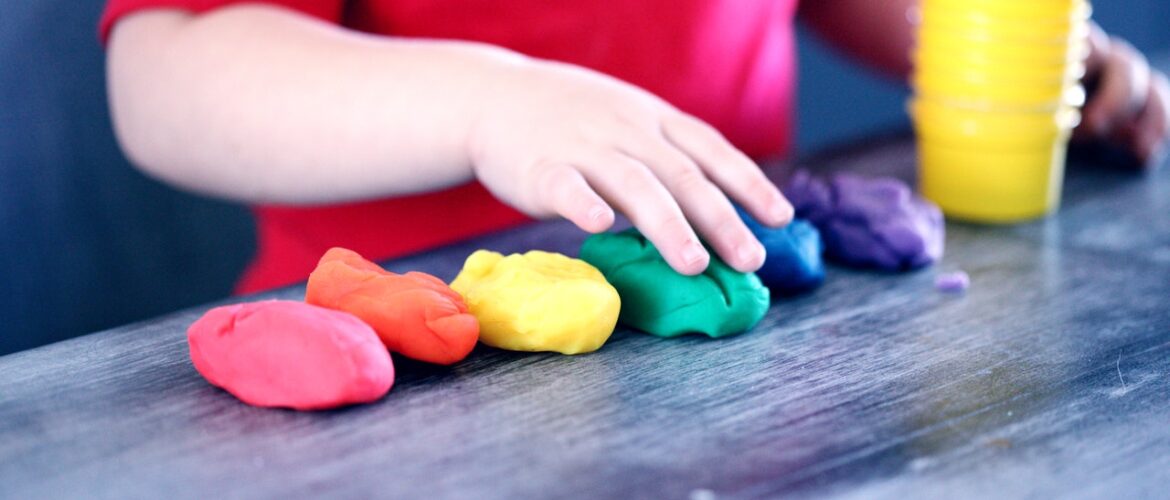By Young, MEM.¹, Mabweazara, S. ¹, Malema, M. ¹, Radzilani, T. ¹, Bebeda, A. ¹, Covelle, W.²
¹ Department of Sport, Recreation and Exercise Science, University of the Western Cape
² Alcohol, Tobacco and Other Drug Research Unit, South African Medical Research Council
[Please note that this is a short paper and work in progress presenting preliminary results. No parts of this paper may be published or duplicated without the permission of the authors.]
Abstract
The COVID-19 pandemic is prioritised on the global agenda. The impact on children’s ability to be at leisure, should take precedence. Leisure participation contributes to the social, physical and mental health and well-being of children. With the onset of COVID-19, children’s ability to participate in their daily leisure pursuits, especially school sports and outdoor leisure activities, were affected. This study made use of social media research to conduct ethnographic observations as data source of what parents shared on social media platforms such as Facebook, Instagram, WhatsApp and popular articles on web page of activities their children engaged in during the first eight weeks of lockdown in South Africa. The study was thus exploratory in nature and the researchers made use of images, text content (e.g. photos and videos) and interactions (e.g. comments; network information) as source material for their observations. Six themes were identified from the data: online schooling, family engagement, health interventions, online extracurricular activities, active and passive leisure pursuits, and mental health. Due to the uncertainty of the pandemic and the lockdown restrictions, the schools started to engage in online schooling practices after the first four weeks of lockdown. Schools shared content, class activities and assignments using google classroom or other platforms. Families were much more engaged with one another. The lockdown allowed for families to talk to one another and engage in meaningful leisure activities. There was a definite focus on health and staying healthy with the onset of lockdown. Parents encouraged their children to engage in physical activities and in most cases engaged in these activities together with their children. Many sport clubs, dancing schools or other cultural schools suffered as a result of the pandemic. As a result, they attempted to remain open and provide the children with some sort of engagement during the lockdown period. Parents mentioned various activities that their children kept themselves occupied with. These activities can be classified as active leisure, passive leisure and unfortunately leisure activities that is socially not acceptable (bad leisure). Mental health of children was raised as a major concern to some parents. Parents mentioned that their children were bored, that the social isolation from their friends affected them and they became withdrawn. Even though lockdown has eased up, their leisure pursuits has not returned to normal. These practices might be long lasting and the impact vast and far reaching.
Introduction
The COVID-19 pandemic is prioritised on the global agenda (Zhu, 2020). On 11 March 2020, the World Health Organisation (WHO) characterised the Covid-19 virus outbreak as a global health pandemic (WHO, 2020). The impact on children’s ability to be at leisure, should take precedence. Leisure participation contributes to the social, physical and mental health and well-being of children (Freeman & Eykelbosh, 2020). Simpson (2005) highlighted that it is the right of a child to play, as treasured by article 31 of the United Nations Convention on the Rights of the Child. Spending time outside and in nature provides critical venues for health movement behaviours, permitting children and youth to accumulate more daily leisure activity, less sedentary behaviour, and sleep better (Tremblay et al, 2015).
With the onset of COVID-19, children’s ability to participate in their daily leisure pursuits, especially school sports and outdoor leisure activities, were affected. South Africa imposed restrictions requiring social and physical distancing (two meters), thus limited community and social gatherings and interactions, sport and playground use (Hongyan et al., 2020). Most children and youth were no longer attending school, with classroom lessons being replaced by home schooling and online learning activities. During the initial response to the pandemic and recommendations for physical distancing, behaviour restrictions, and overall instructions to stay home, families were seeking guidance and solutions to preserve healthy routines, including healthy movement behaviours and opportunities to spend time outdoors (Costal health research, 2020). These limitations were eased as lockdown restrictions were lifted. However, the country is still under lockdown and the stringiest measures taken by government had a visible effect on the children in many ways.
This study attempted to explore the leisure practices of children during the strict lockdown regulations in South Africa at the onset of the pandemic.
Methods
This study made use of social media research to conduct ethnographic observations as data source of what parents shared on social media platforms such as Facebook, Instagram, WhatsApp while also studying popular articles on web pages of activities their children engaged in during the first eight weeks of lockdown in South Africa (Social Media Group, 2016). The study was thus exploratory in nature and the researchers made use of images, text content (e.g. photos and videos) and interactions (e.g. comments; network information) as source material for their observations (Wilson, Gosling, & Graham, 2012). The limitation to the study was that information was limited to family and friends of the researchers to whom they had access to on the social media platforms. However, popular articles on the web made it possible to generalise statements to the wider South African population. Thematic analyses was conducted using the six steps of Creswell (2014). Parents who shared their experiences were contacted and asked if the information could be used for research purposes and only those that consented and willingly shared their information were included in the study. Participants were assured that their personal identities will not be revealed at any stage and that pseudonyms will be used to ensure anonymity where texts will be cited.
Results
Six themes were identified from the data: online schooling, family engagement, health interventions, online extracurricular activities, active and passive leisure pursuits, and mental health.
Online Schooling
Due to the uncertainty of the pandemic and the lockdown restrictions, the schools started to engage in online schooling practices after the first four weeks of lockdown. Schools shared content, class activities and assignments using google classroom or other platforms. For pre-schoolers, a kindergarten teacher shared educational video clips on Facebook that parents showed to their children. Children in disadvantaged areas were not that fortunate. They had limited to no access to the internet making schooling impossible. Some schools managed to have WhatsApp groups with the parents where work were shared or schools handed out hard copies on a weekly basis. Yet, there were still schools that did no engagement until the schools gradually opened for the different grades. It was also evident that some children found it very difficult to adjust to this new method of schooling, especially where parental support was not possible.
Family engagement
Families were much more engaged with one another. The lockdown allowed for families to talk to one another and engage in meaningful leisure activities. Some families played board games, some engaged in baking or the traditional braai’s (BBQ), while others went camping in their backyards or if they lived remotely, in the bush. In families with older children, they made family tic-tok videos and entertained their friends and families by sharing it through social media. Children also assisted their parents with house chores as housecleaning services was not allowed.
Health interventions
There was a definite focus on health and staying healthy with the onset of lockdown. Parents encouraged their children to engage in physical activities and in most cases engaged in these activities together with their children. This was very evident when people were able to exercise outside between restricted hours in the morning. Activities that were mentioned were walking, jogging, cycling, zoom exercise classes and older children making exercise clips that they shared via WhatsApp on their statuses.
Online extracurricular activities
Many sport clubs, dancing schools and cultural schools suffered as a result of the pandemic. As a result, they attempted to remain open and provide the children with some sort of online engagement during the lockdown period. Children participated in online karate classes, goalie courses, rhythmic gymnastics, dancing, music lessons and even drama or dissertation competitions. It was however mentioned in some cases where children were previously very active, they now refused to engage with the online videos shared and showed no interest in engaging in those activities. On the social front, children missed their friends and being able to play and engage with them. Older children however, managed to engage with their friends through video calls and it was also mentioned that some churches remained active with online youth programmes.
Active and passive leisure practices
Parents mentioned various activities that their children kept themselves occupied with. These activities can be classified as active leisure, passive leisure and unfortunately leisure activities that is socially not acceptable (bad leisure). Active leisure activities included children playing with their dogs, cycling for fun, playing soccer and netball with parents or their siblings, playing hide and seek with their siblings, building creative obstacle courses in their backyard, jump trampoline, engage in active playing in and around the house and swimming if the weather permitted it. However, in disadvantaged communities, underdeveloped areas and informal settlements, the environments were not conducive to keep the children indoors and confined to their own houses. Children played in parks and streets without keeping physical and social distancing or taking precautions by wearing masks as per the regulations presented by Government. Passive leisure activities included a lot of online gaming but some games were used by children to maintain socially connected with their friends (i.e. Fortnite), knitting, arts and crafts, watching movies or TV, reading, eating, sleeping and building puzzles. The concerning activities mainly happened in the poorer or underdeveloped communities where the older children roamed the streets having no respect for the regulations made by government. They smoked ‘oka pipe’ while smoking and drinking was prohibited and found ways to get illegal cigarettes and alcohol at private parties.
Mental health
The mental health of children was raised as a major concern to some parents. Parents mentioned that their children were bored, that the social isolation from their friends affected them and they became withdrawn. It was even noted that depression was increasing among children and sadly some reports of suicide were reported in newspapers. Children often mentioned how uncertain they were of their future and were also scared to contract the virus not knowing how it will affect them or their family. Some children were also not privilege to have space outside their homes to engage in activities leaving children frustrated. Parents also felt mentally exhausted as it was difficult to find balance between their work, assisting children with school work and still find time to play with their children or to ensure they are not bored. Many parents also lost their jobs or experienced severe pay-cuts that contributed to the situation.
Conclusion
Children will remain children with the need to play, laugh and engage with their friends. The pandemic with its strict lockdown rules installed by the South African Government, emphasised these needs. Though children stemmed to be fairly active during this time, participating in various leisure activities, their mental state was raised as a concern. Even though lockdown has eased up, leisure pursuits have not returned to normal. These practices might be long lasting and the impact vast and far reaching. These experiences might not be distinct to the South African context but a global trend visible among children. It raises the question as to how we can now use leisure to address these concerns to ensure we maintain having children that is in a good mental state participating in constructive leisure activities.
References
Creswell, J. W. (2014). A concise introduction to mixed methods research. SAGE publications.
Disaster Management Act: Regulations: Alert level 2 during Corona virus COVID-19 lockdown. Gazette 43620 of 17 August 2020.
Freeman, S & Eykelbosh, A. (2020). Covid-19 and outdoor safety; considerations for use of outdoor recreational spaces. Vancouver, BC: national collaborating centre for environmental health.
Simpson, B. H. (2005). Cities as playgrounds: active leisure for children as a human right. In Sport, Active Leisure and Youth Cultures. LSA: Leisure Studies Association.
Social Media Research Group. (2016). Using social media for social research: An introduction. Social Media Research Group: United Kingdom.
Tremblay, M.S., Gray, C., Babcock, S., Barnes, J., Bradstreet, C.C., Carr, D., Chabot, G., Choquette, L., Chorney, D., Collyer, C. and Herrington, S., (2015). Position statement on active outdoor play. International journal of environmental research and public health, 12(6), pp.6475-6505.
Vancouver costal health research institute (2020). Ask an expert; how do i help my kids stay active at home during the corona virus outbreak? 2020 available from https://www.vchri.ca/stories/articles/2020/04/17/ask-expert-how-do-i-help-my-kids-stay-active-home-during-coronavirus as accessed on 02/11/2020
Wilson, R. E., Gosling, S. D., & Graham, L. T. (2012). A review of Facebook research in the social sciences. Perspectives on psychological science, 7(3), 203-220.
World Health Organisation. (2020) Corona virus disease (covid-19) pandemic. available from; https;//www.whoiint/emergencies/diseases/novel-coronavirus-2019/events-as –they-happen.
Xu Z, Shi L, Wang Y, Zhang J, Huang L, Zhang C, Liu S, Zhao P, Liu H, Zhu L, Tai Y, Bai C, Gao T, Song J, Xia P, Dong J, Zhao J, Wang FS. (2020) Pathological findings of COVID-19 associated with acute respiratory distress syndrome. Lancet Respir Med. 8(4): 420-422. doi: 10.1016/S2213-2600(20)30076-X. Epub 2020 Feb 18.
Zhu, W. (2020). Should, and how can, exercise be done during a corona virus outbreak? An interview with Dr. Jeffrey A. Woods. Journal of sport and health science, 9: 105-107,DOI: 10.1016/j.jshs 2020.01.005
Guan, H., Okely, A.D., Aguilar-Farias, N., del Pozo Cruz, B., Draper, C.E., El Hamdouchi, A., Florindo, A.A., Jáuregui, A., Katzmarzyk, P.T., Kontsevaya, A. and Löf, M., (2020). Promoting healthy movement behaviours among children during the COVID-19 pandemic. The Lancet Child & Adolescent Health, 4(6), pp.416-418. https//doi.org/10./1016/52352-4642 (20) 30131-0





Leave a Comment